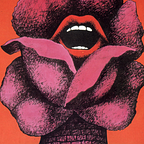Without the Robot, Horse_ebooks is Practically Worthless as Art
When Twitter spambot @Horse_ebooks was revealed to be an actual human artist this week, the Internet lost a beloved form of art — hence the scarcity of woooing and prevalence of angry disillusioned booing that continues today. @Horse_ebooks only mattered as art, was considered poetic, because of its perceived machine-ness that epitomized the nature of computerized attempts at communication. Take away the machine, and it loses its value as a cultural object.
Max Read actually predicted this negative public reaction in January 2012 when he wrote in an email to Splitsider that the appeal of @Horse_ebooks was “us inventing signals out of the noise; it’s not cool when it’s all signal masquerading as noise.”
Once upon a time three years ago, @Horse_ebooks was actually a real robot tweeting nonsensical texts deemed poetry by its fanbase which then turned it into a Twitter phenomenon. It was these fans that made @Horse_ebooks “found art,” before it was taken over by a human artist in 2011. The community gave it meaning, called it art, and so it was.
Then Jacob Bakkila came along and took control of the account from Russian spambot creator Alexei Kouznetsov in September of 2011. Avid @Horse_ebook fans noticed the posting location change from “horse ebooks” to “the web” immediately, prompting conspiracy theories about biological interference. Bakkila was collecting text snippets by hand and waking up every 2 hours in the middle of the night to tweet as if he was a robot, but no one knew this back then. Jeb Lund over on Mr Destructo wrote in 2011:
“In short, the most outraged and negative theory was that a human being subverted the creative process by disabling a spam bot and deciding to use his or her own imagination. Somehow this act ruined it,” Lund concluded, after predicting the account’s demise.
As Bakkila’s personal art project, the @Horse_ebooks fan base grew to 200,000+ followers and captured the hearts of influential media types. The account also inspired comics, homemade merchandise, countless think pieces and even academic study.
To be clear, this level of success was achieved by lying — other ebook parodies operated by humans failed to become even remotely popular; precisely because no one actually cares about this type of poetry from a human. Bakkila as a machine mimicker isn’t particularly novel either as people were already doing this on Twitter.
Following the revelation of the truth and the subsequent shelving of the account, the more famous of the derivative art (like the comic) also came to a halt. So in this way, Bakkila ruined the magic that was @Horse_ebooks three-fold; he booted the robot which in turn destroyed the account as a “found art” piece; wrecked the Weird Twitter community (at least emotionally); and demotivated the makers of supreme fan art. By his biological hand alone, Bakkila subsequently depreciated the value of everything associated with @Horse_ebooks.
Lund’s 2011 sentiment that the account was “ruined” because of human intervention was echoed again this week. Brian Ries at the Daily Beast pronounced the art as dead, while Dan Sinker mourned this loss of trust and belief in something once deemed beautiful (as did others) in his widely linked eulogy for the Twitter account. Others not ready to give up on @Horse_ebooks as a robot have started a change.org petition to have the account reverted back to its original algorithm, a move that would preserve each piece of art by Bakkila and Kouznetsov, “one being a period in time, and one being forever running as a clockwork machine.”
Sure, Bakkila made the account more popular under his watch, but his right as an artist to co-opt found Internet art that seemingly belonged to everyone only to subsequently destroy it for personal gain is worthy of contentious debate, if not an e-pelting. Given the timing of the reveal, it is hard not to view Bakkila’s takeover of the spambot’s Twitter, the gallery show and new video game announcement as anything other than a dirty marketing ploy for himself.
Within this destruction of found art lies another question: can art created under false pretenses still be considered good? The answer to that is an ethical, resounding “no,” especially when you consider the deception was carried out not for the good of the public. Herein lies the problem: Bakkila’s art only received critical acclaim because it was believed to be coming from a machine, not because a human was performing as a machine. Would the people that buy paintings created by elephants still buy them if they knew the works in question were made by a person using their foot? No, of course not. What if the person painting these so-called elephant paintings claimed he was deceiving people in the name of performance art? The answer is still no.
While it’s true that art sometimes intentionally sets up false expectations in order to remove them, that was not the point of Bakkila’s project— he wasn’t trying to show us anything about ourselves or our relationship with machines. The point of it all, Bakkila told the the New York Times “was to perform as a machine.” Bakkila’s @Horse_ebooks project was not some Reverse Turing test — his “performance” was solely about himself.
Without the robot, Bakkila is simply a scam artist.
